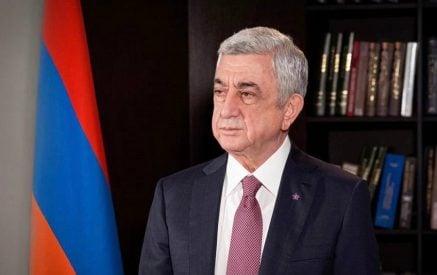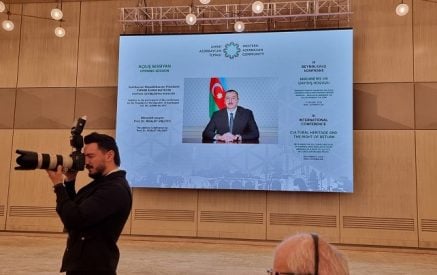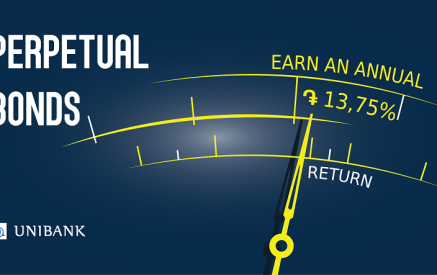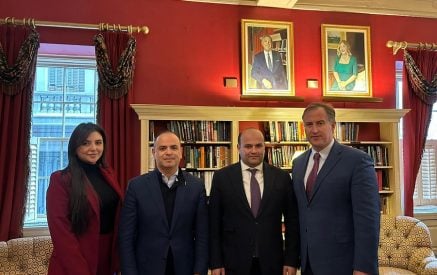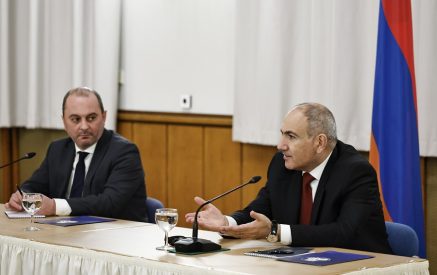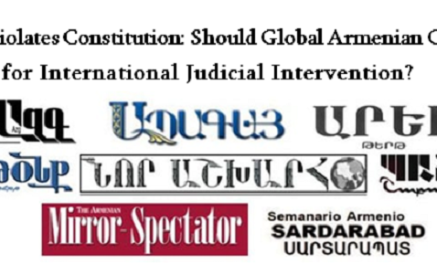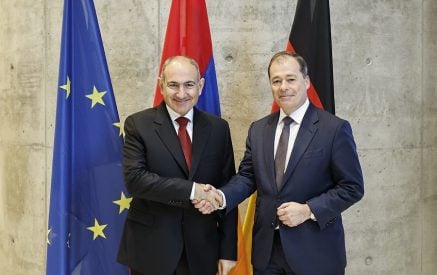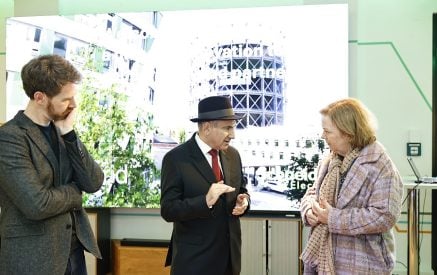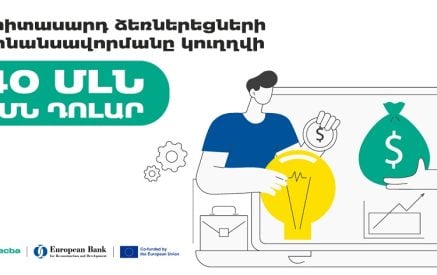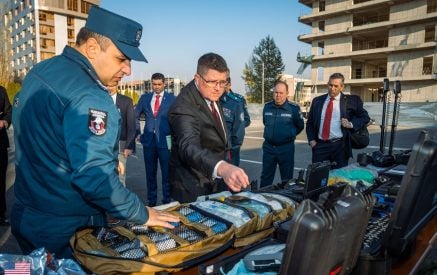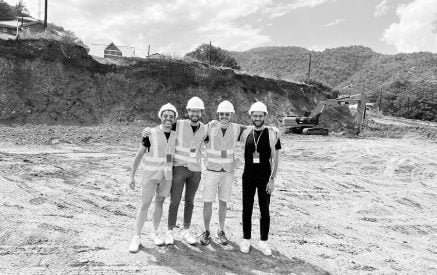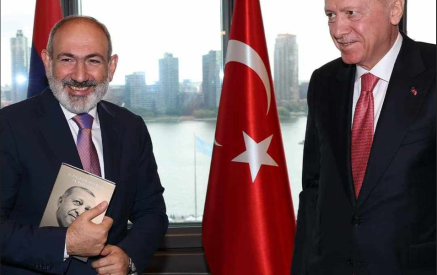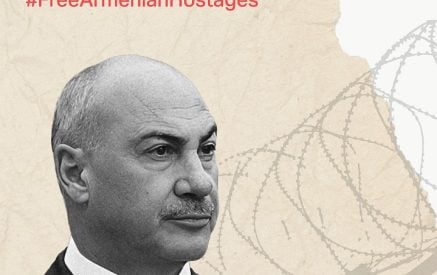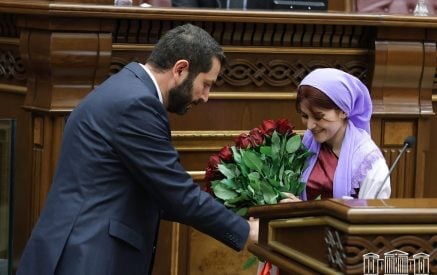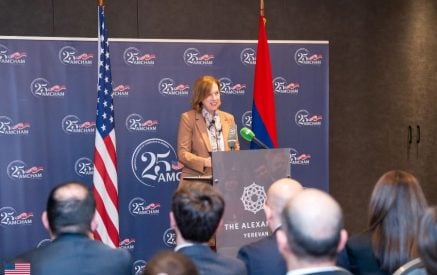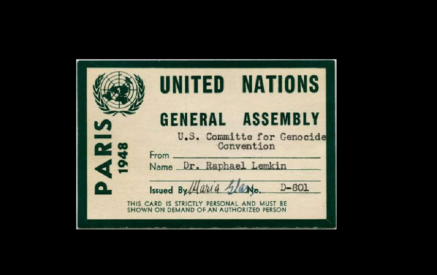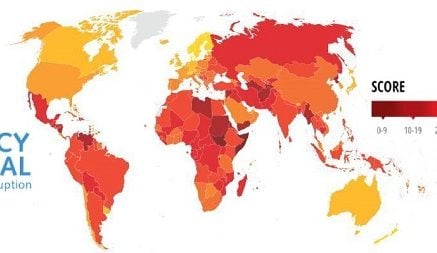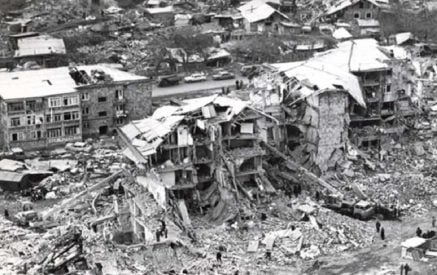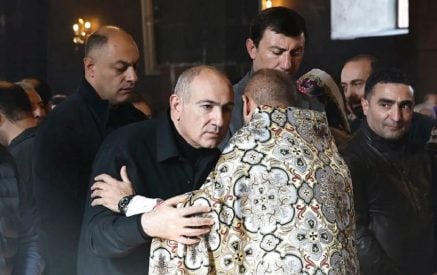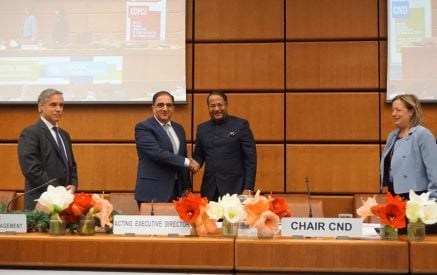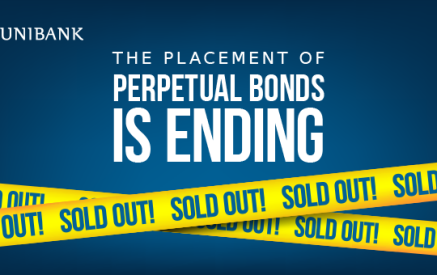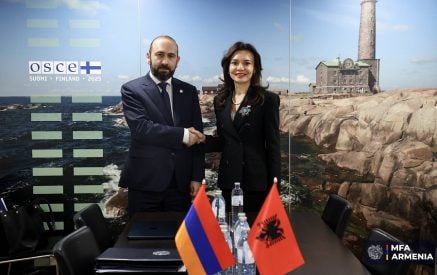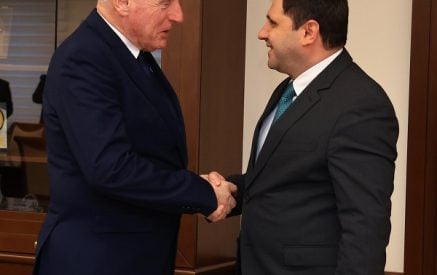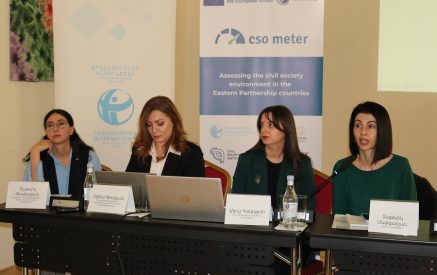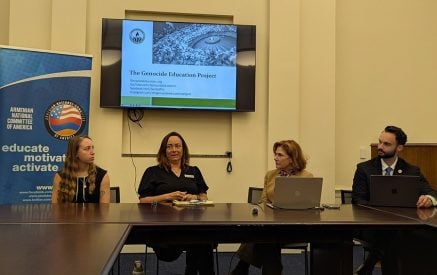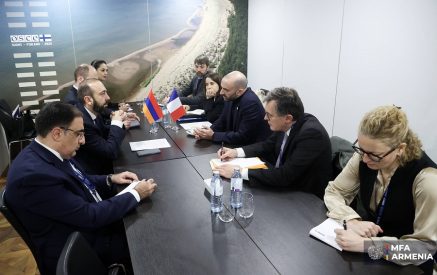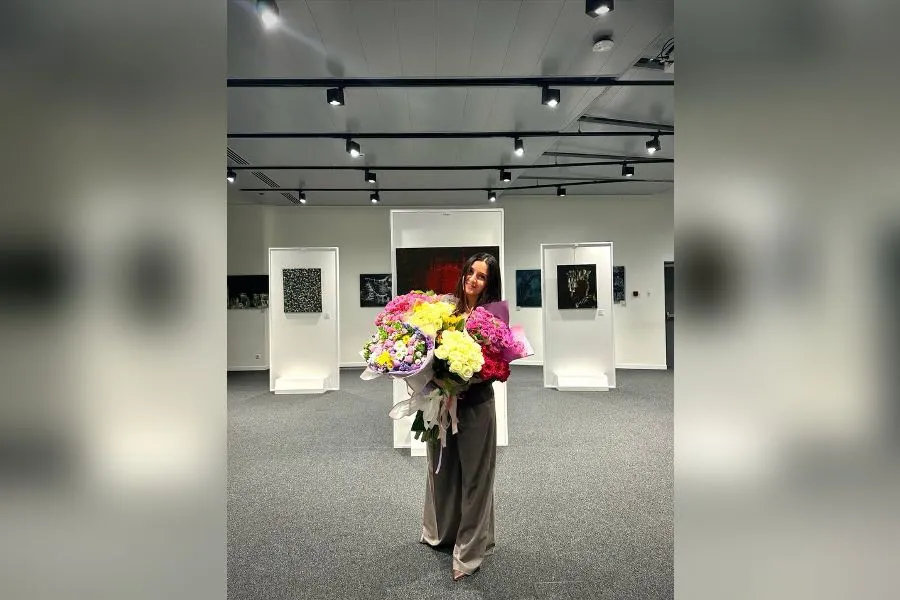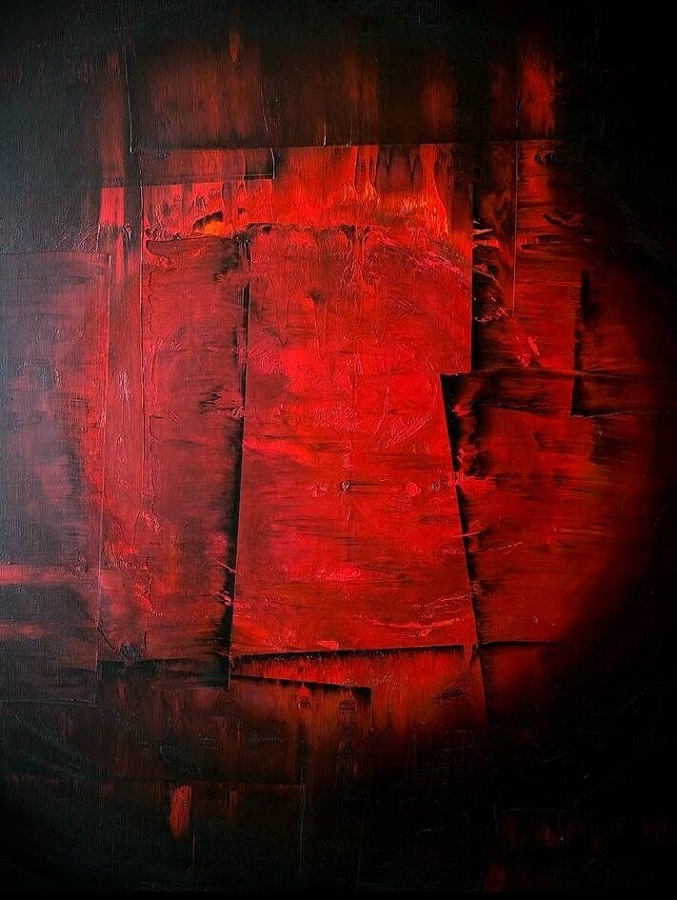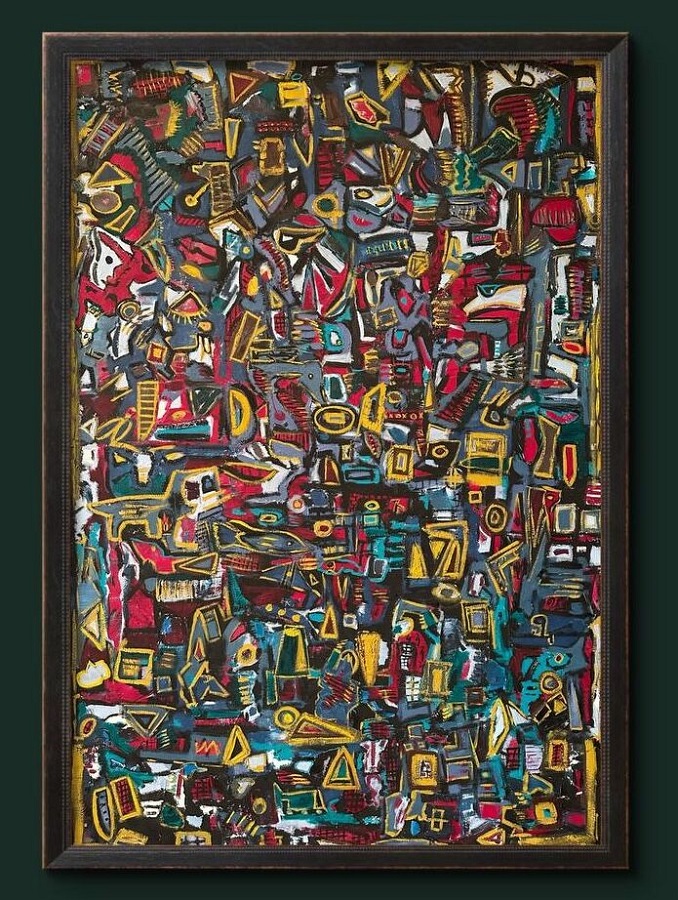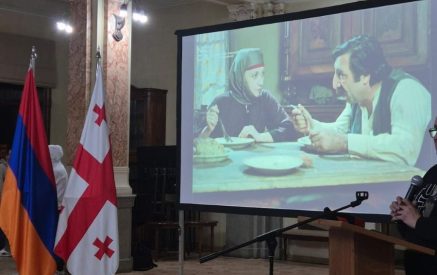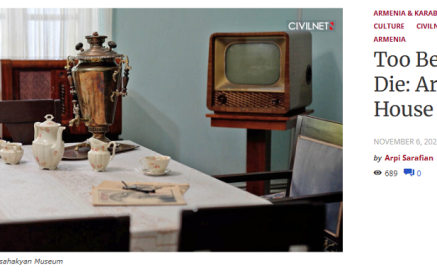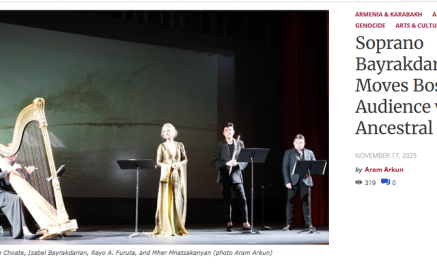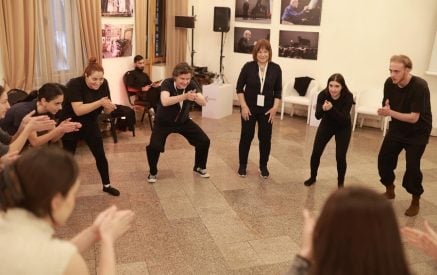Armenian weekly. From September 19 to 21, the first solo exhibition of clinical psychologist, psychotherapist and artist Eleonora Gotti (real name: Eleonora Saghatelyan), titled Catharsis, took place in the AGBU Armenia Hall, where visitors had the opportunity to become acquainted with her paintings. Her exhibition and her work marry her profession — the stories, memories and emotional processing — with her affinity and passion for art and creativity.
From Psychology to Art
By profession, Gotti is a clinical psychologist and psychotherapist. She studied at the Faculty of Psychology of Yerevan State University where she deepened her knowledge, and is currently studying at the Academy of Fine Arts in Milan. Art did not appear in her life through childhood, but rather during her psychological work with people.
Gotti works at the Claudia Nazaryan Medical Center, where she works and “communicates daily with people from Artsakh.” Following the 44-day War in 2020 and the ethnic cleansing of Armenians from Artsakh in 2023, her work with Artsakhtsis’ has increased exponentially. “They tell me about their pain, and I feel the full depth of that heaviness,” she explained.
Her work is not limited by location, reaching beyond Armenia into the vast Armenian diaspora. “In addition, my patients are Armenians living in different countries, with whom I also work online,” she said. “Each session is a new experience — filled with memories, loss and stories of struggle.”
These heavy yet profound stories brought Gotti to art, and the brush became a means of expressing what could not be spoken in words. At first, she simply tried painting when she could, but soon she could no longer imagine her day without it. Painting became a therapeutic method for her; the foundation of her profession converged with her creative spirit.
Catharsis: Transformation through pain
Gotti’s exhibition is titled Catharsis — the term that comes from ancient Greek theater and psychology, meaning purification, release from blocked emotions.
For Gotti, Catharsis has a dual meaning. First, it is her personal path: by listening to and engaging with painful stories and memories, she transforms that heaviness into colors and forms. Each canvas represents her psychological cleansing and inner relief as she grapples with the weight of her profession through creativity.
But Catharsis is also a reflection of her patients’ and the Armenian people’s collective experience.
She believes that art can become therapy — not only for the one who creates but also for the one who observes.
“Sometimes someone looks at a canvas full of dark colors and says: ‘This is exactly what I felt, but I couldn’t express it,’ she explained. “In that moment, the same catharsis occurs — seeing and recognizing one’s own pain, but also releasing it.”
The language of art
Gotti’s work belongs to the movement of abstract expressionism. Although she has been deeply inspired by Jackson Pollock, Frank Auerbach and Hans Schlicker, her greatest aim is originality.
“I don’t like repeating myself,” she relayed. “Each canvas is a new experience for me. The color born within me — I place that on the canvas. If it is dark, I cannot betray myself and choose a bright color.” Her works are mostly in dark tones but always contain a ray of light. That light symbolizes hope, resilience and faith. For Gotti, the color of peace is blue — the color of the sky and eternity.
The Catharsis exhibition is not only an artistic initiative, but also a charitable one. The proceeds from sold works will be directed to the educational needs of large families displaced from Artsakh, especially their children.
Gotti breathes the same inspiration into the very communities whose stories and memories have played a role in her creative process.
The initiative is also dedicated to the memory of Sergey Atayan, who was killed in the 2020 war in Martakert. Gotti elucidated on the inspiration she drew from Atayan’s life: “Since Sergey attached great importance to education, I decided that the charitable part of my exhibition should be directed specifically toward supporting education. In this way, his ideas will continue to live on.”
One of her paintings, Resilience, was inspired by a soldier who, during sessions with their psychotherapist, communicated “his heavy emotional experience.” She described how “His description revealed a mental state in which, after witnessing horrifying images, a person no longer wants to hear, see, or perceive reality. In such shocking moments, consciousness seems to shut itself off from the outside world in order to protect itself.” The piece reflects the convergence of her two worlds. “That is why the auditory and visual organs — ears, eyes, nose —are absent from the canvas. This symbolizes resilience, when psychological defense mechanisms do not allow the person to confront the weight of reality,” she explained.
In contrast, Hope is about inner light:
“Although stories of pain and loss constantly accompany us, nevertheless, inside there always remains a small spark, a belief that recovery is possible.”
Her experiences working with Artsakh Armenians, is foundational to her work: “For me, that faith is tied to Artsakh: it is not a loss but an expectation of return.” Hope beckons with shades of blue, demarcated texturally. “The presence of blue — the sky or water — repeatedly appearing in my works symbolizes peace and harmony,” she continued. “Hope is that inner flash of light that constantly reminds us: even in the conditions of the deepest pain, one can preserve inner balance and continue to believe in the future,” she remarked.
Today Gotti is working on a new series dedicated to the fate of women from Artsakh. Created in black-and-white tones, the series tells of pain, strength and resilience.“My colors cannot be distant from reality. Perhaps brighter shades will come later, but for now, there are still questions that demand dark colors,” she said.
Gotti’s creative path proves that art and psychotherapy can merge, becoming a means of life transformation. Her Catharsis exhibition suggests that even the heaviest stories can give birth to new strength, a new breath and a ray of light. Art, being not only a language of self-expression but also of healing, continues to connect people — through the invisible threads of memory and hope.
Anzhela Sedrakyan


